Over the last week or so there have been a number of small but nevertheless interesting stories concerning a wide assortment of different animals. Since none of them were extensive enough to warrant a post of their own I’ve decided to collect several of them into the same post.
Let’s start close to home, for me at least. For many years a species of Green Crab (Carcinus maemas) native to Europe has been causing a lot of destruction along the coasts off New England. The green crabs consume both juvenile clams and eelgrass, both of which are important for many of the seafoods that are collected in those waters. This is another example of an invasive species that hopped a ride on one of our ships and has now become a pest in the environment in which we accidentally placed it. The image below is a green crab.
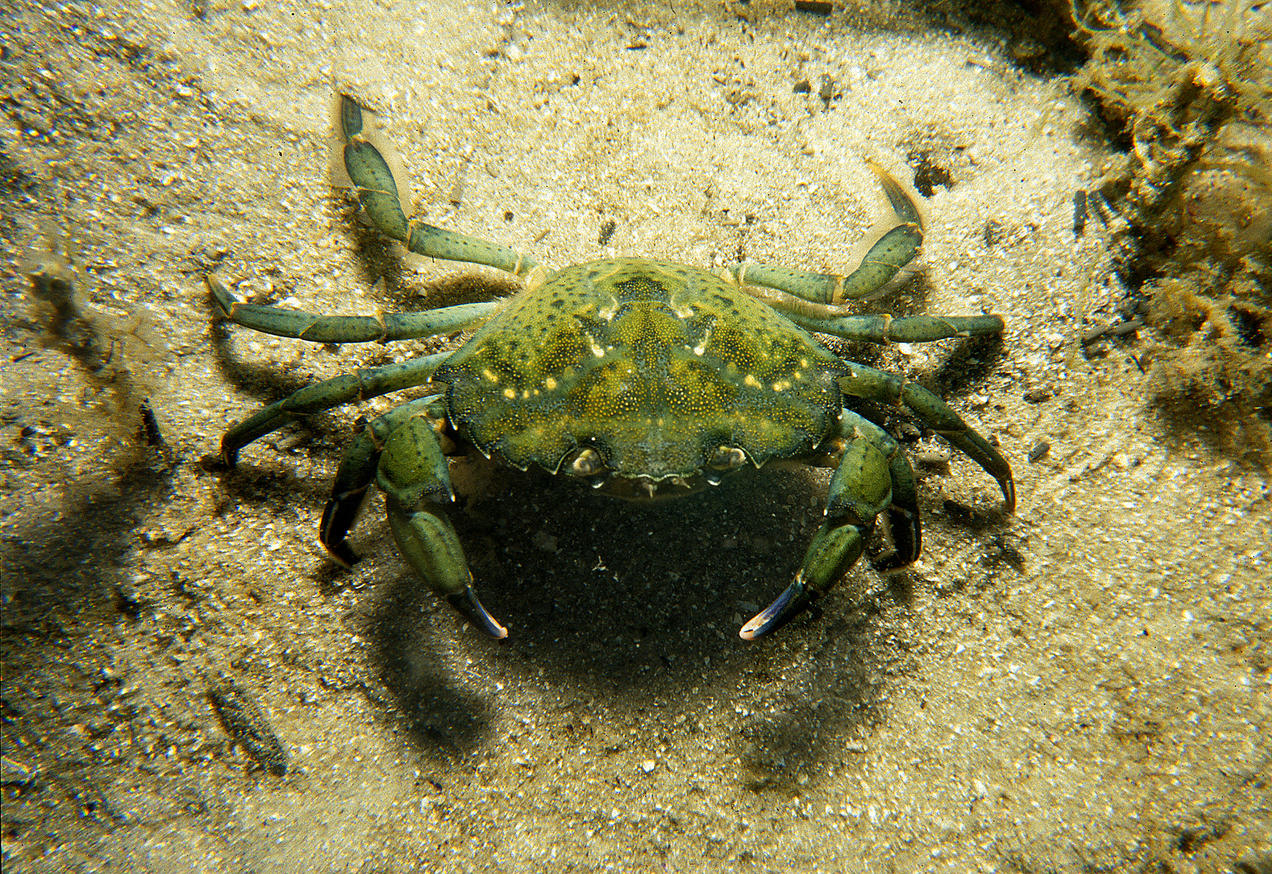
The story is now getting worse however, because a newer, larger and more aggressive variety of the green crab is moving south from the waters around Nova Scotia. Whereas the green crabs New Englanders had become familiar with are shy and try to hide from large creatures such as humans the Canadian crabs are so belligerent that researchers who try to collect specimens find themselves being attacked by the crabs. “Any time I went to grab one they went to get me instead,” said Louis Logan, a University of New England graduate student taking part in the research. In the labouratory a comparison of the destructive abilities of the two varieties clearly showed that the more aggressive species caused far more damage.
Since the green crabs originally came from Europe I guess it’s only fair that our next story should come from Europe. The small town of Aitoliko is sometimes known as the ‘Venice of Greece’ because of it’s many picturesque canals but over the past week Aitoliko has become famous for something much ickier. A vast carpet of spider webs is now covering Aitoliko, every tree and many of the buildings are completely enclosed within a layer of spider silk, see images below.
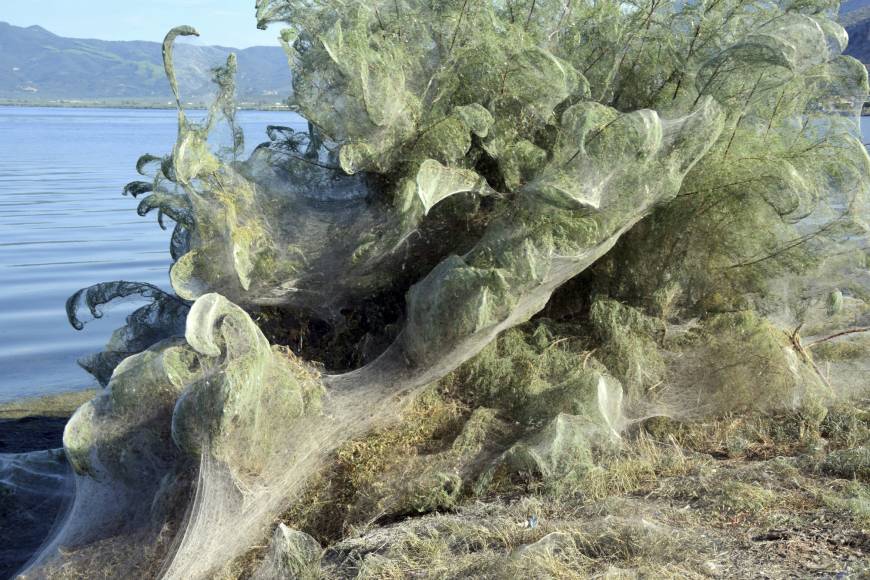

Now to produce such a monstrously huge blanket of webbing you’d think you would have to have a monstrously large spider but you’d be wrong, spiders of the Tetragnatha genus have a leg span usually less than two centimeters but can produce sheet-like coverings than serve as homes to thousands of individual spiders.
Spiders of this genus are known to often produce web systems similar to those now seen in Aitoliko although rarely are they this extensive. There’s no mystery, no mad doctor behind the enormous population surge in spiders however. The temperature this summer in Aitoliko has been just perfect for the breeding of the spider’s chief source of food, gnats. So with a lot of gnats breeding a lot more gnats you get a lot more spiders and a small Greek town covered in spider webs.
“It’s a simple prey-predator phenomenon,” according to Fotis Pergantis a Greek biologist. “…Once the temperatures begin to drop the gnat populations will die out, the spider population will decrease as well.”
Another story this week concerns another type of arthropod predator. The Praying Mantis is arguably the fiercest, most voracious killer for its size of any animal on Earth. The stick-like insect will literally devour anything it can grab, in fact female praying mantis are legendary for eating their mates during the act of mating. See image below.
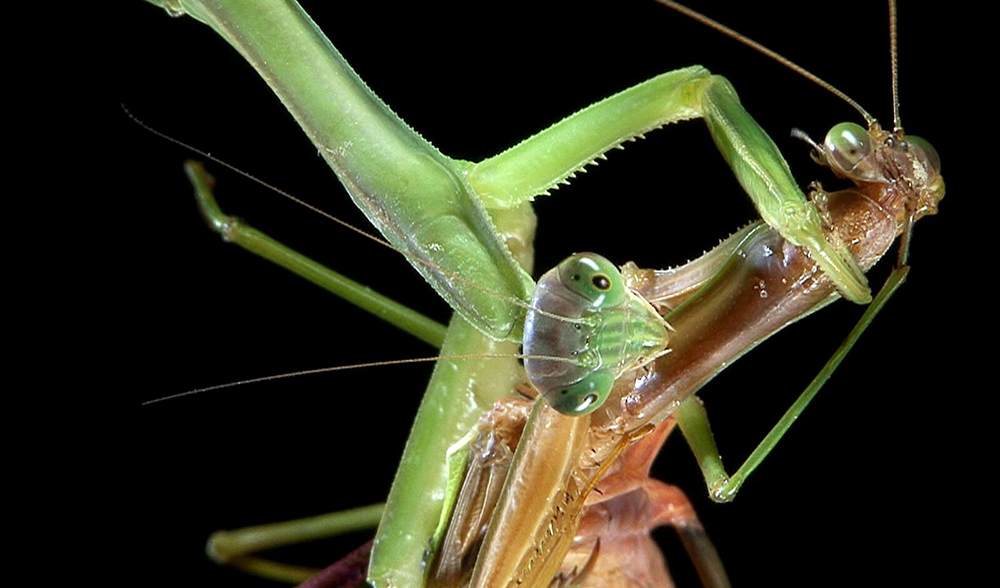
Now, for the first time the praying mantis has been observed in the act of fishing. That’s right, if a small enough fish comes close enough to a praying mantis it’s dinner.
The observation was made in India, home to the giant Asian mantis, Hierodula tenuidentata, at a small artificial rooftop pool. The pool is stocked with the common freshwater fish the guppy and for five nights in March of 2017 the pool was visited by a male giant Asian mantis.
The mantis was observed to perch on one of the water lilies that grew in the pool and wait, a typical hunting strategy of mantises. Over the course of the five nights the mantis was seen to catch and eat nine of the guppies. See image below.
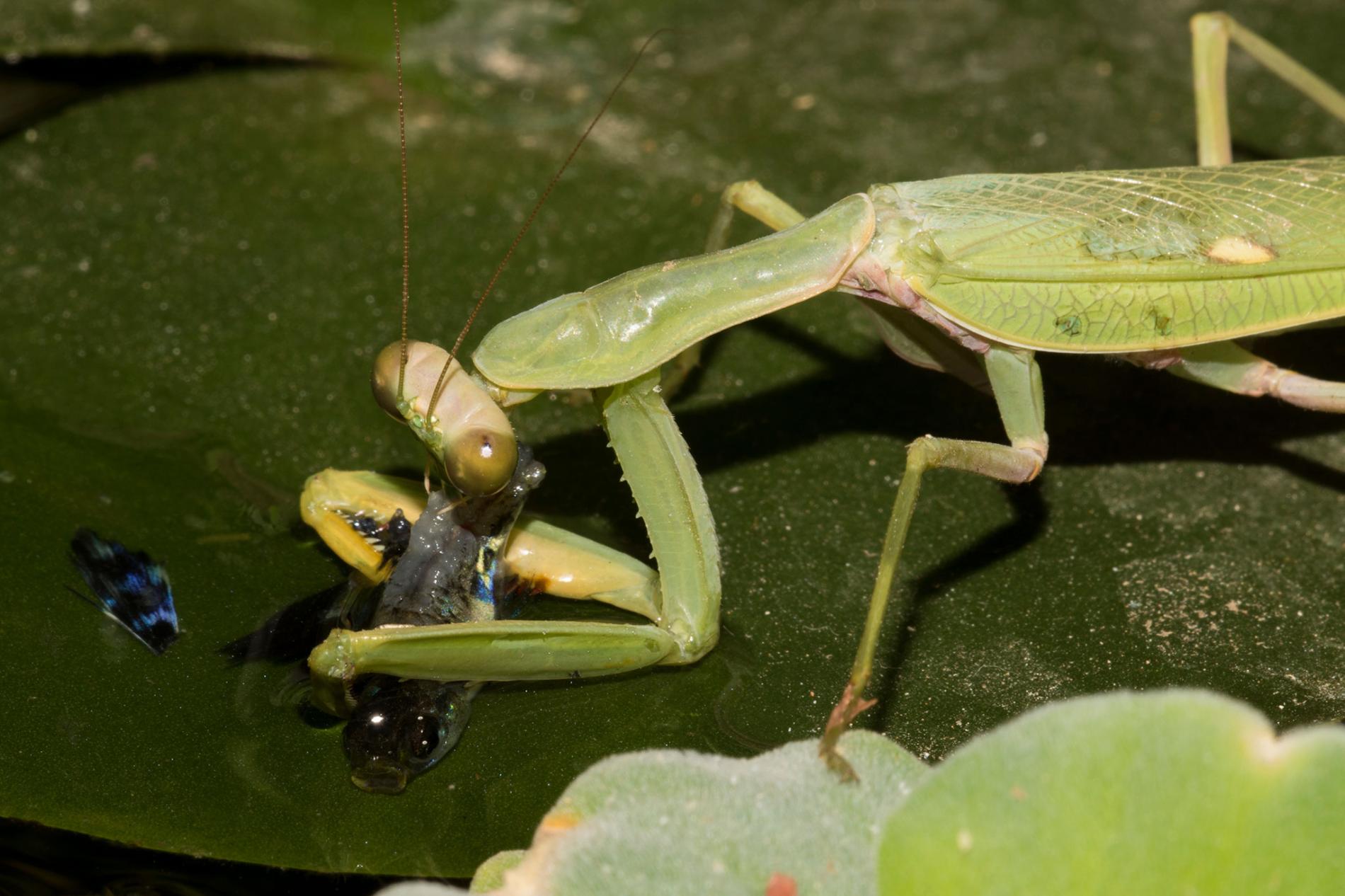
As I said earlier, the praying mantis has a reputation of simply being one of the best hunters you will ever find. Now for the first time we know that they’re not too bad at fishing either.
Which brings me to my last story, which actually is about a robotic sea creature. You may recall my post of the 8th of September where I discussed several aquatic hunting robots that were being developed to help eradicate invasive species in the waters of Florida and The Great Barrier Reef, well this story is about another robotic sea creature, although a gentler one.
Engineers at Florida Atlantic University and the US Office for Naval Research have been working on the design and development of a robot jellyfish which is intended to serve as an instrument to monitor and study ocean environments such as coral reefs. The robot, see image below, is based upon the anatomy of the larval stage of the moon jellyfish (Aurelia aurita) and the first prototypes were made by 3-D printing.
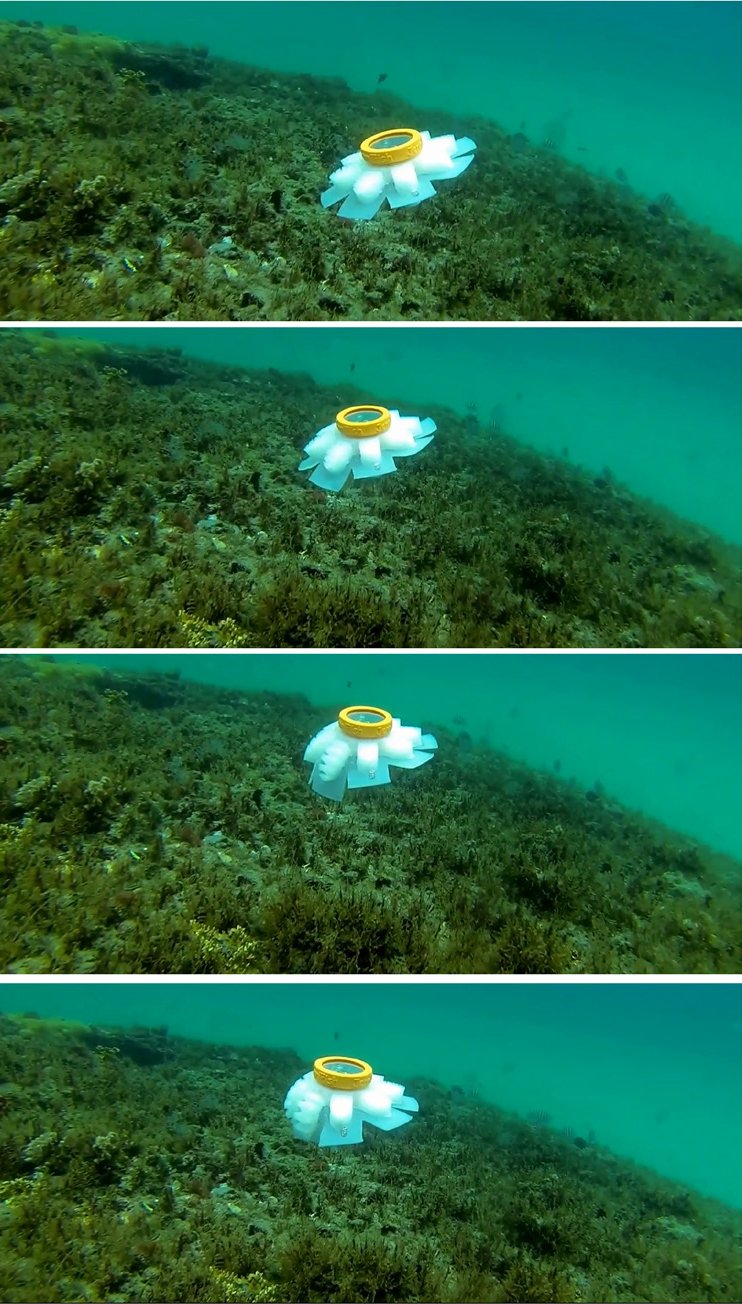
The development team hopes to soon incorporate a variety of sensors onto their robot jellyfish soon along with the ability to navigate through complex ocean terrain.
O’k so maybe a robot jellyfish isn’t an actual animal but it certainly is an example of how the lessons learned from the animal world are being incorporated into our robots even as we learn more and more about the many different ways animals have evolved in order to live in this world.
